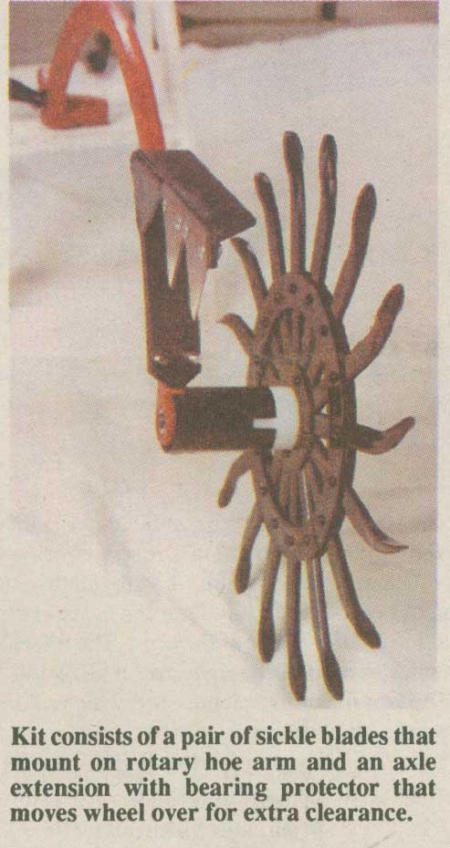
You can turn your rotary hoe into a stalk chopper by equipping it with a new knife kit that lets it cut through trash without plugging. Even if you're not interested in chopping stalks, the knife kit lets you cut through the heaviest trash while using your hoe to aerate the soil, incorporate chemicals, cultivate weeds out of row crops, etc.
Inventor-manufacturer Rick Heintzman, Onaka, S. Dak., says pairs of tungsten sickle blades clamp onto the wheel shanks about 1 in. from the opposing wheel. He also fits each wheel with his no-till conversion kit that consists of an axle extension and bearing protector. (He's been selling the no-till kit for two years -- see FARM SHOW's Vol. 16, No. 4).
"The bearing protector moves the wheel close to the next arm instead of dead center between arms, allowing rocks, trash, root balls, etc. to flow through without plugging," says Heintzman. "Under dry conditions the hoe is virtually impossible to plug. You can use it to aerate the soil and incorporate chemicals in the spring, to kill weeds in row crops, or to chop corn, soybean, or milo stalks in the fall. By aerating the soil you can no-till plant 7 to 10 days earlier.
"The blades shear off trash and allow you to chop corn, soybean, sunflower, and other crop residue at 12 to 15 mph. They also do a great job of cutting through corn root balls.
It's cost effective to convert a new rotary hoe because the kit will allow it to work under all conditions without plugging up.
On Deere rotary hoes the front and rear wheels are mounted on a walking axle assembly. Heintzman turns the wheels upside down to reverse them and then mounts them on a specially designed 22-in. long extension arm. A spring mounted on the front side of the arm forces the front wheel up and the rear wheel down. The sickle knives bolt onto the rear part of the axle. "The tougher the conditions, the better the blades cut," notes Heintzman.
